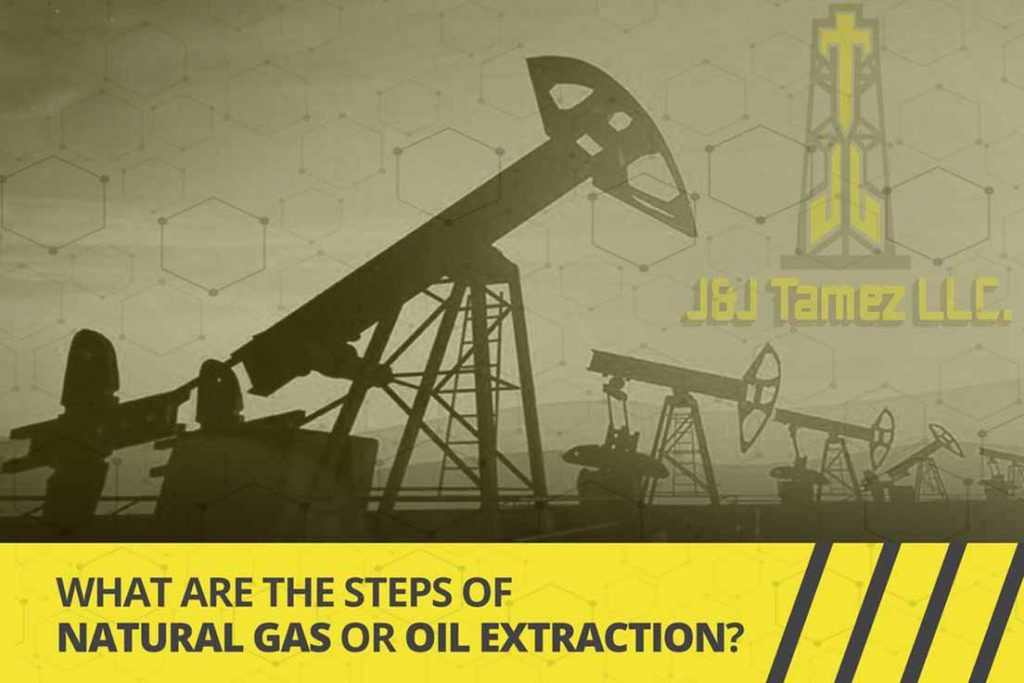Steps for oil and natural gas extraction

Nowadays, chemical industries play a vital role in our life. So if you are looking for an oilfield production chemicals company, we are here for you. After years of experience in this chemical field, we understand lots of information related to this. That is why, in this post, we will discuss how the oil and natural gas extraction process works. We will mostly talk about fracking; however, this is only one step of a comprehensive process.
Below we have given the seven steps of oil and natural gas extraction:
Preparing the rig site
The existing infrastructure access roads and pads are built and then set up for the second step: drilling. From the beginning until the end, everything from designated access roads and traffic plans to noise safety and barriers procedures is carefully planned and monitored as per local and state laws.
Drilling
First, the drill rig is introduced to the location, maybe 20 or 30 truckloads, and put together. Now it is time to make the infrastructure essential to unlock the oil and natural gas trapped, which is more than a mile below under the ground. A well is drilled directly down into the floor down the pad. The first stage is to prepare the surface hole down to a depth of 100 feet below the deepest known aquifer. A steel casing then cements in place, so there is no risk of polluting precious water aquifers.
After this, the “long hole” is drilled. After reaching a depth about 1000 feet above the underground area where oil and gas are trapped, the hole directionally steers to turn it horizontal and out, maybe another mile or two in the distance following the same rock bed. There is where the technology to keep the hole drilling in the same 10-foot-interval for two miles is needed. Still, this process allows the well to access oil and natural gas across a longer distance than just the energy directly beneath the first pad.
Apart from vertical drilling, horizontal drilling minimizes the scale and impact of aboveground land disturbance by allowing the drillers to use only one drill pad for multiple wells instead of numerous places having a single well each. After the technological advancements, well sites are far fewer in number and smaller than they used to be just 10 to 20 years ago.
Cementing and testing
Once the target distance is reached, the drill removes its steel pipe push to the bottom, called “well casing,” cement in place. A rigorous test ensures the tube is impermeable before any production of natural gas or oil can occur.
Well completion
Before the drillers tap the oil and gas, a perforating gun is typically lowered into the ground and fired into the rock layer in the deepest part of the well completion chemicals. They are creating holes that connect the rock holding the oil and gas to the wellhead.
Fracking
That is the first stage when a well opens; it is the right time to unlock the rock’s oil and natural gas trap. Using specialized equipment to monitor pressure and data from the well in real-time, fracking fluid is 0.5% chemicals, 99.5% water and sand. Many pipes pump at high pressure via entering holes to create a paper-thin leak in the shale rock, freeing the oil and gas trapped inside.
The same cycle is repeated 4 to 5 times, gradually working up the hole until all the wellbore’s lateral length has fracked. Maybe it needs to cycle 20 or 30 times, but mainly, this process takes only a few days to finish.
Production and fracking fluid recycling
Once the fracking process finishes, production begins. Oil and natural gas flow up from the fracturing fluid and wellbore. Then it is recovered and recycled and used in other fracking operations.
Well abandonment and land restoration
According to the law, when oil and natural gas has been extracted, a well is permanently plugged, and the land is made as it was before the drilling. Because maybe the ground can use for some other activities in the future, there has to be no sign that a well was once there.
Producing oil and gas energy is done safely while giving millions of dollars to the state’s tax base.
We hope this article helps understand mixing plant oilfield because chemical mixing plant uses this method in their chemical production. If you are looking for oilfield chemical companies in texas, J&J Tamez is the best solution for you.
Also Read: How to Stay Safe in the Chemical Industry?
